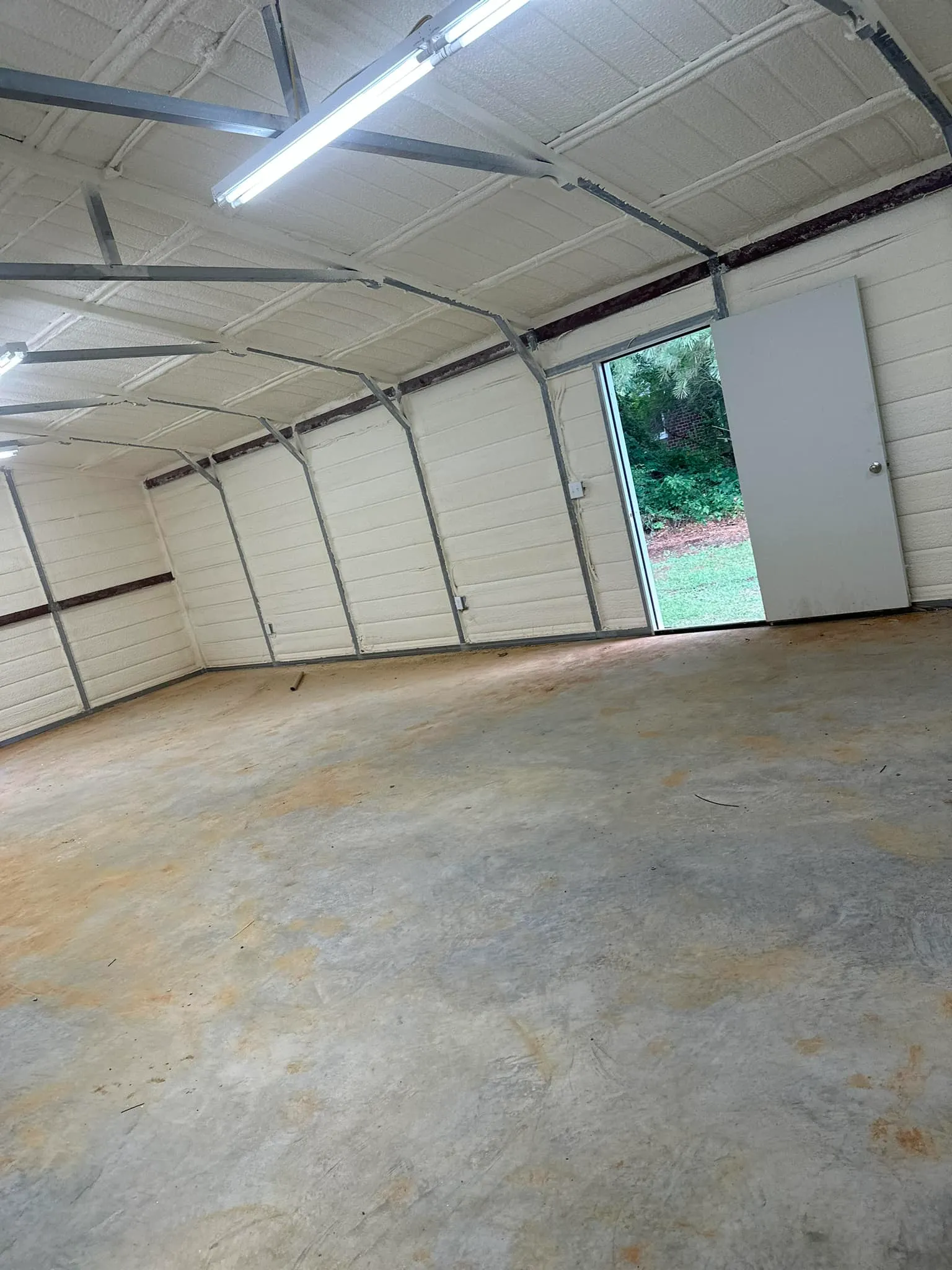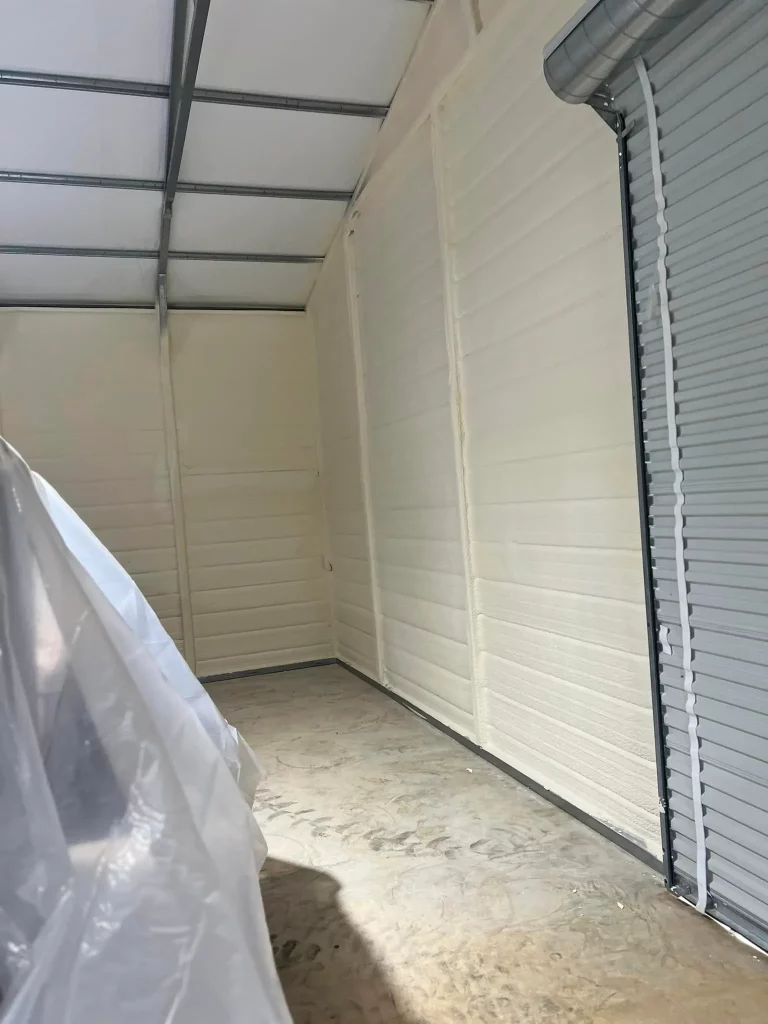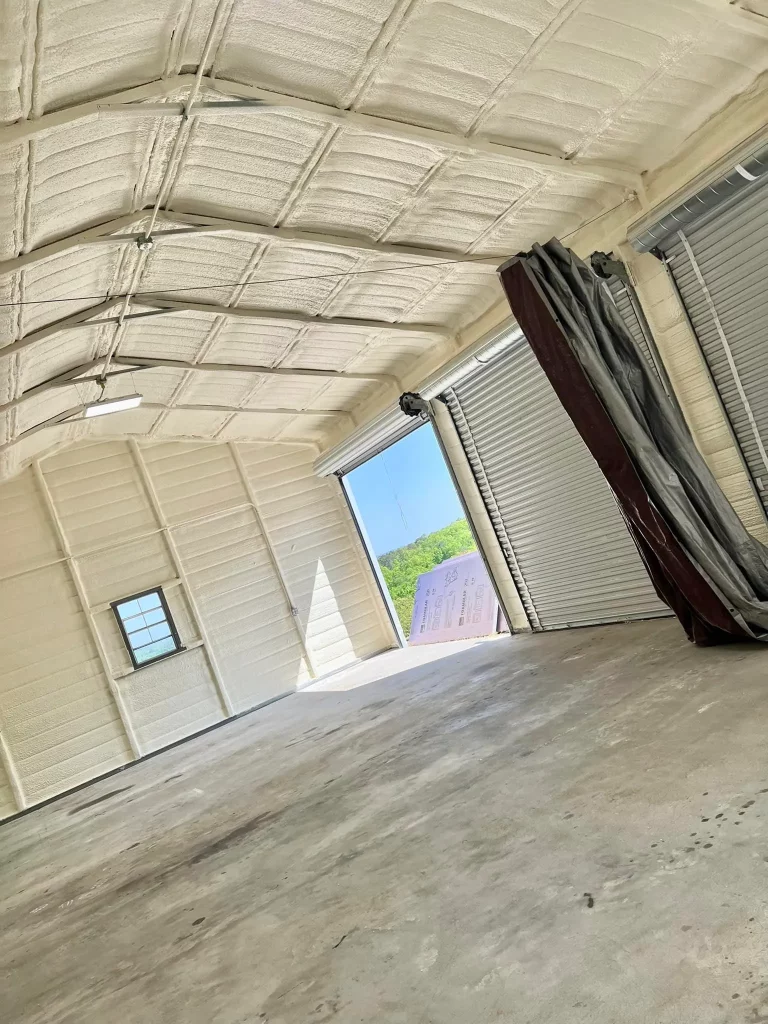
If you’re a homeowner staring at skyrocketing energy bills or a builder aiming to meet stricter efficiency standards, spray foam insulation might be the game-changer you need. Imagine sealing every crack, gap, and crevice in your walls, attic, or roof with a material that expands to fill spaces perfectly, blocks air leaks, and adds a layer of protection against moisture and pests. That’s the promise of spray foam insulation, a method that’s gained traction for its ability to create airtight barriers in homes and commercial buildings alike.
Spray foam insulation involves applying a chemical mixture that reacts and expands on contact with surfaces, forming a durable foam that adheres tightly. It comes in two main varieties: open-cell, which is lighter and more flexible, and closed-cell, which is denser and offers better structural support. This guide breaks down everything you need to know, from the basics of how it works to the nuts and bolts of installation, maintenance, and even future innovations. Whether you’re retrofitting an older house or designing a new office space, understanding spray foam can help you make smarter choices for comfort, savings, and sustainability.
Drawn from years of hands-on work in insulation projects across residential and commercial sites, this resource pulls together practical knowledge to give you a clear path forward. You’ll start with the fundamentals: what spray foam is and why it stands out. Then, you’ll dive into types, benefits, and the installation process. From there, expect coverage on costs, common pitfalls, and ways to measure results. By the end, you’ll have the tools to decide if spray foam fits your project and how to get started.
Here’s what you’ll learn:
Stick with this guide, and you’ll walk away equipped to tackle your insulation needs with confidence.
Spray foam insulation starts with two components: a polyol resin and an isocyanate, mixed at the point of application. When combined, they create a reaction that produces foam, which you spray onto surfaces using specialized equipment. This foam expands rapidly—up to 100 times its liquid volume—filling voids and forming a seamless layer.
Unlike traditional materials like fiberglass batts or cellulose, spray foam doesn’t just sit in place; it bonds directly to the substrate, whether that’s wood, metal, or concrete. This adhesion prevents settling or sagging over time. The process happens fast, often curing in seconds, so projects move along without much downtime.
At its heart, spray foam addresses one of the biggest energy drains in buildings: air infiltration. Studies show that air leaks can account for up to 40% of a home’s energy loss. Spray foam seals these leaks while providing insulation value through its R-value, a measure of thermal resistance. Higher R-values mean better insulation.
You might wonder how this compares to other methods. Fiberglass, for example, requires precise fitting to avoid gaps, while spray foam conforms to irregular shapes effortlessly. It’s particularly useful in hard-to-reach areas like rim joists or around pipes.
For larger buildings, spray foam scales well, covering vast surfaces like warehouse roofs or commercial walls with uniform coverage. Keep in mind, though, that the chemicals involved need professional handling to ensure safety and effectiveness. Beyond its application and adhesion, spray foam’s real value shines in improving energy efficiency and overall building comfort.
Expert Tip: Before any project, check local building codes—some areas require specific certifications for spray foam applicators to guarantee proper ventilation during installation.
Buildings lose heat through conduction, convection, and radiation, but spray foam tackles them all. Its cellular structure traps air, slowing heat transfer, while the continuous seal stops drafts that make rooms feel unevenly heated or cooled.
Take a typical family home: without good insulation, the HVAC system works overtime, driving up costs. A report from the U.S. Department of Energy indicates that proper insulation can reduce heating and cooling expenses by 5-20%. Spray foam often exceeds these savings because of its superior air sealing.
Comfort isn’t just about temperature. Spray foam reduces noise transmission—open-cell versions absorb sound waves effectively, making it ideal for urban homes near busy streets. In buildings, it helps maintain consistent indoor environments, crucial for offices or schools where distractions affect productivity.
Sustainability plays a role too. Modern spray foam uses blowing agents with low global warming potential, aligning with green building standards like LEED. Data from the Insulation Institute reveals that insulated structures cut carbon emissions by blocking the need for excessive energy use.
Market data underscores the shift: the global spray foam insulation market reached $8.4 billion in 2022 and is projected to grow at 6.5% annually through 2030, driven by demands for energy-efficient construction (Grand View Research). This growth reflects real-world adoption in both residential retrofits and new builds.
As you consider options, think about your climate. In cold regions, spray foam’s moisture resistance prevents condensation issues that plague other insulations.
Spray foam comes in two primary types, each suited to different needs.
Open-cell foam has an airy structure with interconnected cells that allow air and moisture vapor to pass through. It’s about 0.5 pounds per cubic foot in density, making it lightweight and easy to apply in thick layers without sagging.
R-value sits around 3.5-3.8 per inch, solid for most attics or interior walls. It also provides some sound dampening, which is a bonus for bedrooms or home theaters.
Pros include lower material costs and simpler application—less pressure needed from the spray gun. It’s flexible, so it handles minor settling in structures without cracking.
Cons? It absorbs water, so it’s not ideal for exposed areas like crawl spaces. Perm ratings are higher, meaning it breathes but might need a vapor barrier in humid climates.
Closed-cell foam, denser at 1.7-2 pounds per cubic foot, has sealed cells that block air and moisture completely. It boasts a higher R-value of 6-7 per inch, offering twice the insulation power of open-cell in the same space.
This type adds rigidity, acting as a structural element in walls or roofs. It’s buoyant, so it’s popular for marine applications or flood-prone areas.
On the downside, it’s pricier and requires more skill to apply evenly. Expansion is stronger, which demands precise control to avoid over-pressurizing enclosed spaces.
Here’s a quick comparison:
| Feature | Open-Cell | Closed-Cell |
|---|---|---|
| Density (lbs/ft³) | 0.5 | 1.7-2 |
| R-Value per Inch | 3.5-3.8 | 6-7 |
| Cost (per board ft) | $0.40-$0.60 | $0.80-$1.20 |
| Best For | Interiors, soundproofing | Exteriors, moisture-prone |
| Water Resistance | Low | High |
This table highlights why choosing the right type depends on your specific setup.
For hybrid needs, some projects mix both—open-cell inside for comfort, closed-cell outside for protection.
Expert Tip: Test a small area first if you’re unsure about expansion; closed-cell can push framing apart if not calculated right.

Spray foam delivers on multiple fronts. Building on the energy savings discussed earlier, homeowners often see 20-50% reductions in bills after installation, per Oak Ridge National Laboratory field studies.
Durability stands out too. It lasts 25-80 years without degrading, unlike batt insulation that compresses over time. The foam resists mold, insects, and rodents, protecting your investment.
For commercial buildings, it supports faster construction—spray teams cover large areas quickly, reducing labor costs. In cold storage facilities, closed-cell foam maintains temperatures efficiently, cutting refrigeration energy by up to 30%.
Health benefits include better indoor air quality. The seal limits allergen entry, and low-VOC formulas minimize off-gassing.
Market stats show appeal: 70% of new U.S. homes incorporate some spray foam, up from 40% a decade ago (NAIMA).
Don’t overlook fire resistance—many foams meet Class A standards, slowing flame spread.
Key Takeaways:
Installing spray foam requires preparation and precision. Start with a site assessment: identify target areas like attics, walls, or under slabs. Ensure the space is dry and clean—dust or moisture can weaken adhesion.
Gather equipment: a proportional two-component spray rig, hoses, nozzles, and protective gear (respirators, suits). Pros use trailer-mounted units for big jobs.
Application begins with mixing the A and B components at a 1:1 ratio. Spray in layers, starting low and building up to avoid uneven curing. For walls, inject through holes or apply from the interior.
Curing takes minutes, but full strength develops in 24 hours. Trim excess with a saw once set.
Post-install, inspect for gaps and test air tightness with a blower door.
For DIY kits, stick to small spots like rim joists, but full projects demand certified installers.
Expert Tip: Maintain gun temperature at 120-140°F for optimal flow; cooler mixes lead to clogs.
Common tools include oscillating saws for trimming and moisture meters for prep. Detailed tools and materials are covered in the next section.
Core materials are the resin and isocyanate, sourced in kits or bulk. You’ll need personal protective equipment: full-face respirators with organic vapor cartridges, gloves, and coveralls.
Equipment varies by scale. Handheld kits suit DIY, while professional rigs feature generators and heated hoses for remote sites.
Safety gear extends to fire extinguishers, since uncured foam is flammable. Cleaners like acetone handle spills.
For advanced work, infrared thermometers monitor surface temps, ensuring the foam bonds well.
Budget for disposal: empty drums require hazmat handling.
One hurdle is over-expansion, especially with closed-cell in tight spaces. Solution: calculate volume precisely and use low-pressure guns.
Moisture during application causes poor curing. Dry the area thoroughly and use dehumidifiers if necessary.
Off-gassing concerns arise with sensitive occupants. Opt for low-GWP products and ventilate for 24-72 hours post-install.
Cost overruns happen from waste. Train teams on nozzle control to minimize drips.
In hot climates, foam can cure too fast. Schedule for cooler times or use retarders.
Regulatory hurdles include permits for commercial jobs. Check with local authorities early.
Key Takeaways:
Expert Tip: Use a thickness gauge during application to hit target depths without guesswork.
Expect $1-3 per board foot installed, varying by type and location. A 1,000 sq ft attic might run $2,000-6,000.
Factors include labor (60% of cost), materials, and access difficulty. Open-cell saves upfront, but closed-cell pays off faster in harsh climates.
ROI shines through savings: payback in 3-7 years via lower utility bills. Energy Star estimates $200-500 annual savings for average homes.
Tax credits like the Inflation Reduction Act offer 30% back on qualified installs, boosting returns.
For buildings, energy modeling software predicts savings—essential for green certifications.
Market data: Insulation investments yield 10-15% annual returns through efficiency gains (Deloitte).
Weigh long-term vs. short-term: spray foam’s durability often justifies the premium.
Here’s a cost breakdown table:
| Component | Estimated Cost Range | Notes |
|---|---|---|
| Materials | 40-60% of total | Higher for closed-cell |
| Labor | 40-50% | Varies by region |
| Equipment Rental | $100-500/day | For pros, included in bid |
| Permits/Prep | $200-1,000 | Site-specific |
Once installed, spray foam needs little upkeep. Inspect annually for cracks from structural shifts, especially in seismic areas.
Closed-cell resists moisture, but open-cell might need monitoring in damp spots. Clean surfaces gently—no harsh chemicals that degrade the foam.
If damaged, cut out sections and patch with compatible foam. Avoid DIY fixes on large areas.
Lifespan exceeds 80 years in ideal conditions, per manufacturer warranties.
Bio-based foams are emerging, using plant oils to reduce petroleum reliance. These maintain performance while shrinking environmental impact.
Smart foams with embedded sensors could monitor moisture or thermal performance in real-time, alerting to issues early.
Advancements in low-pressure kits make DIY safer and more accessible for prosumer projects.
Regulatory pushes for zero-ozone depleters continue, with HFO blowing agents leading the way.
Market projection: by 2030, sustainable variants could capture 40% share (MarketsandMarkets).
Expert Tip: Stay updated via industry associations; new formulations often qualify for better rebates.
You’ve now covered the essentials of spray foam, from its basic mechanics to advanced applications and trends. Key points include its unmatched sealing power, the choice between open- and closed-cell for your needs, and the straightforward installation that yields lasting results. Armed with this knowledge, assess your space, crunch the numbers on costs and savings, and consult pros if needed.
Refer back to sections as you plan—use the comparison tables for decisions and tips for smooth execution. Taking these steps will enhance your home or building’s efficiency and comfort for years.
For personalized advice on spray foam projects, reach out to LMC Insulation. Email [email protected] or call (479) 351-6175 to discuss your needs with experienced specialists ready to help.

Yes, when installed correctly by certified professionals. Modern foams have low VOCs and cure quickly, but ventilate the space during and after application to disperse any initial odors. Sensitive individuals should plan to stay away for 24-48 hours.
Small touch-ups with kits are possible, but full installations demand expertise. The chemicals require precise mixing, and errors lead to health risks or poor performance. Hire pros for best results and warranties.
It boosts value by improving energy efficiency, which appeals to buyers. Appraisers note upgraded insulation as a plus, potentially adding 5-10% to home price through documented savings.
It adapts well, but choose types wisely. Closed-cell excels in humid or coastal areas; open-cell suits dry, moderate zones. Consult local experts for climate-specific advice.
Aim for R-38 to R-60 in attics, R-13 to R-21 in walls, per IECC guidelines. Your location and building type dictate exact needs—use online calculators for precision.
Newer formulas with low-GWP agents are, reducing greenhouse gases. It lowers overall energy use, offsetting production impacts. Look for products certified by GREENGUARD for minimal emissions.